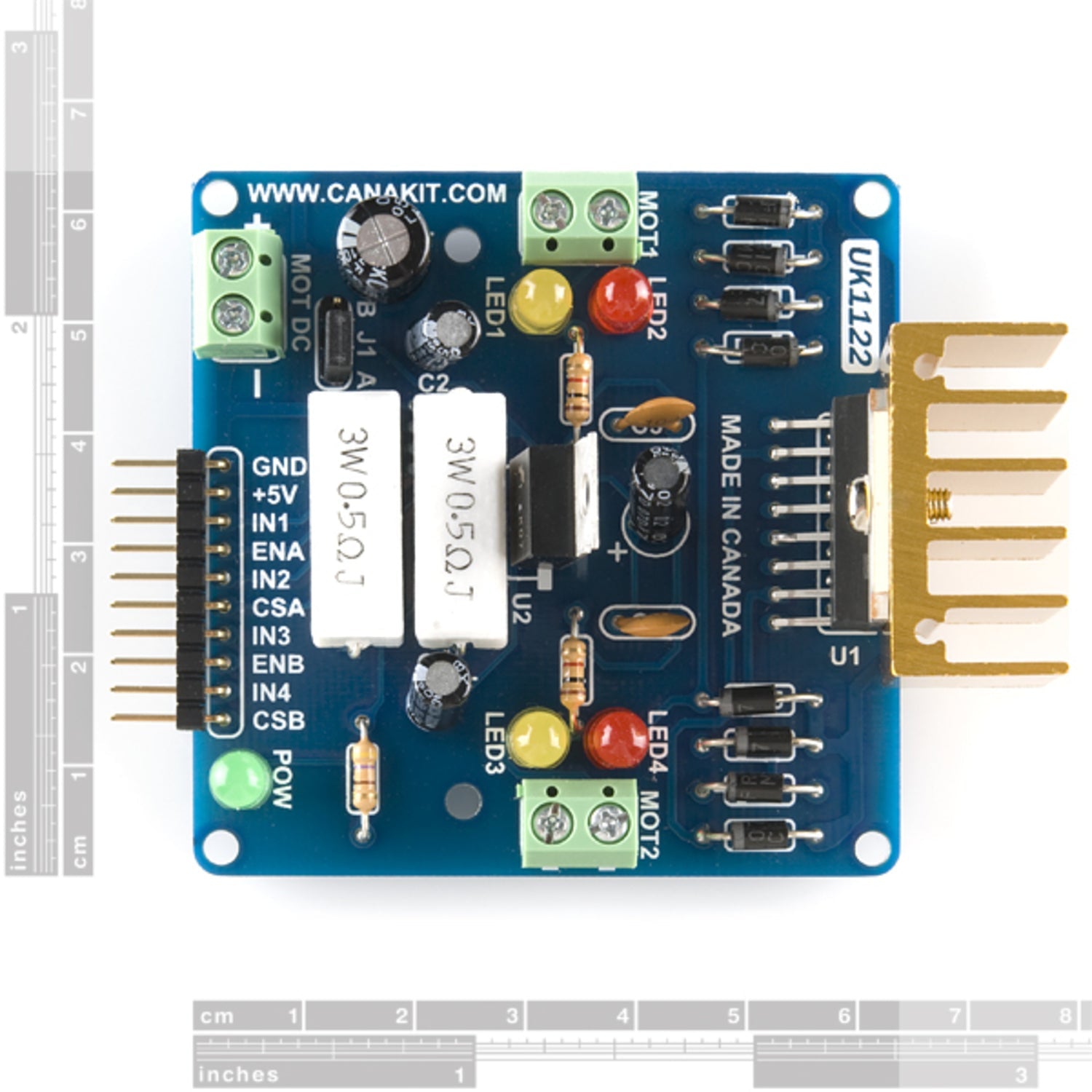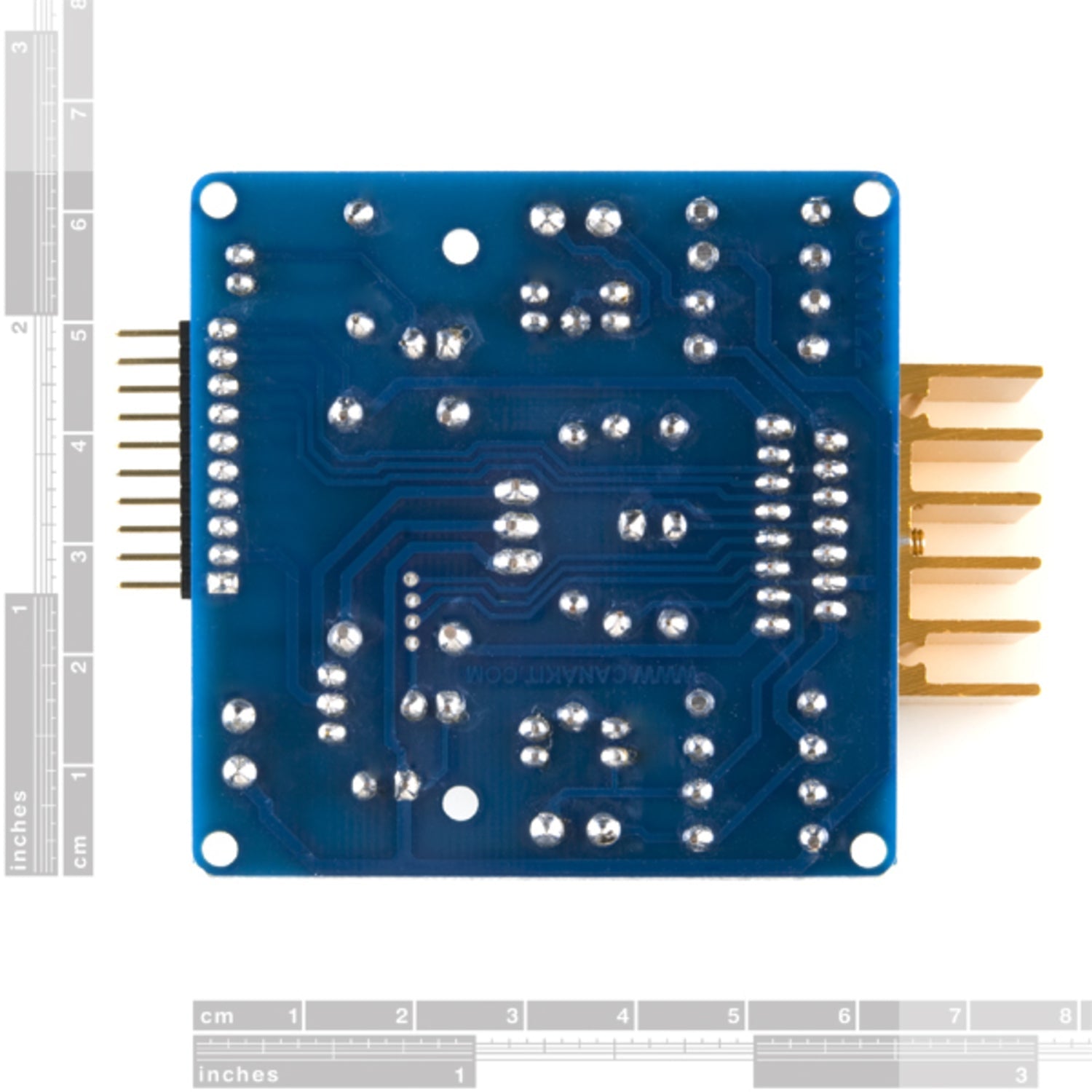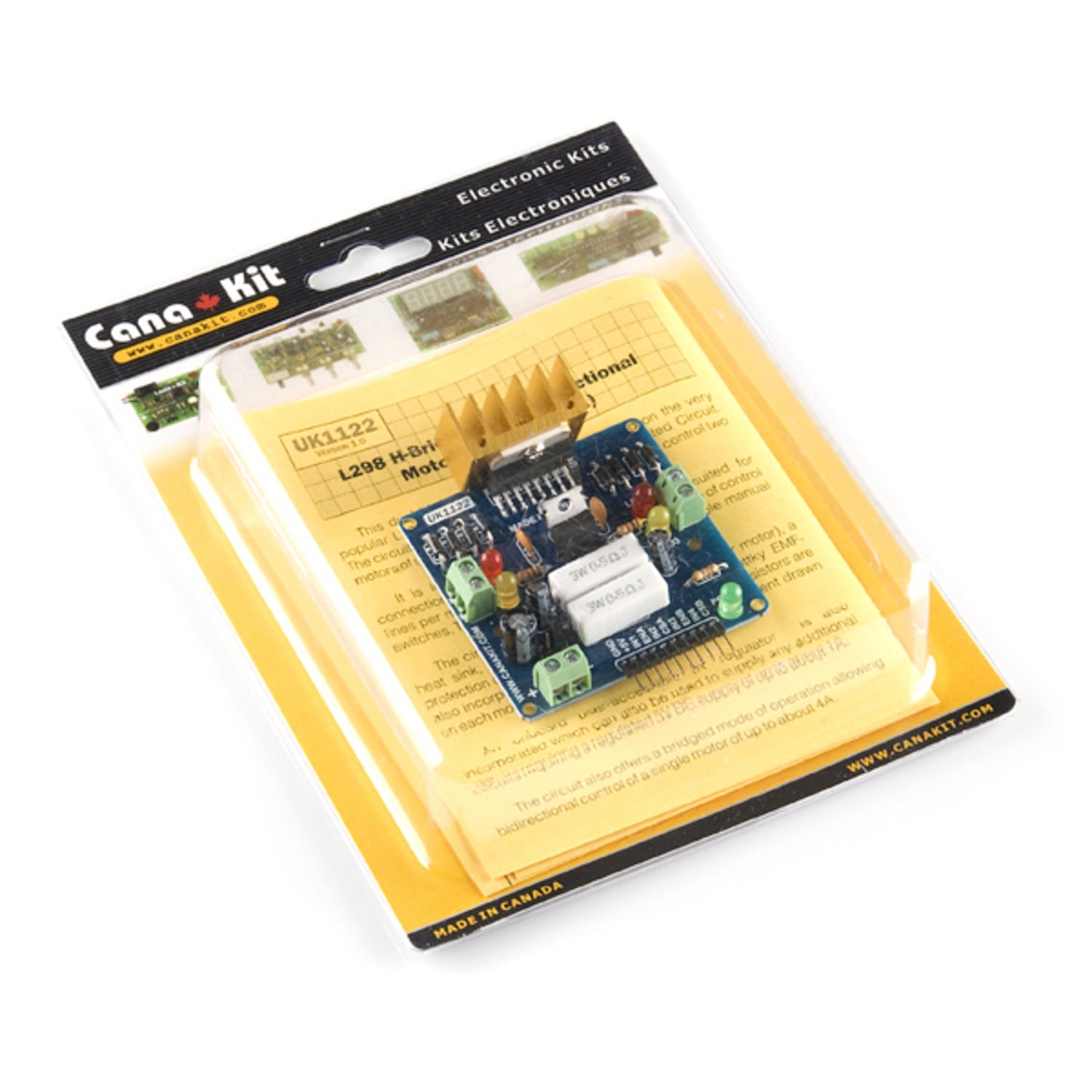This dual bidirectional motor driver from Cana Kit is built on the highly popular L298 Dual H-Bridge Motor Driver Integrated Circuit. It lets you effortlessly and independently control two motors up to 2A each in both directions. Ideal for robotics, it easily connects to microcontrollers with just a couple of control lines per motor. It can also interface with manual switches, TTL logic gates, relays, etc. The circuit comes with 4 direction LEDs (2 per motor), a heat sink, screw-terminals, and eight Schottky EMF-protection diodes. Two high-power current sense resistors allow you to monitor each motor's current through your microcontroller. There's an on-board user-accessible 5V regulator that can power additional circuits needing up to about 1A of regulated 5V DC. It also offers a bridged mode for bidirectional control of a single motor up to about 4A. Features include a 6 - 35 VDC motor supply, standard TTL logic level control, up to 2A output power per motor, current sense outputs, onboard power resistors for current limit, enable and direction control pins, an external diode bridge for output, a heatsink for the IC, a power-on LED indicator, and 4 direction LED indicators. Dimensions are 3 x 2.5'. The product comes with a User’s Manual.



Using this motor driver is easy. First, connect your motors to the appropriate terminals. Make sure to match the correct polarity to avoid any issues. For control, you can connect it to a microcontroller using just a couple of control lines per motor, or use simple manual switches, TTL logic gates, or relays. When powering it up, ensure the motor supply voltage is between 6 to 35 VDC. The on - board 5V regulator can be used to power additional circuits, but don't exceed about 1A. Keep an eye on the current drawn by each motor using the current sense resistors and your microcontroller. As for the bridged mode, it's great for bidirectional control of a single motor up to about 4A. Just switch to this mode when needed. For maintenance, check the heat sink regularly to ensure it's not overheating. Also, look at the LEDs for any signs of trouble. If the power - on LED isn't lit, check your power connections. And always refer to the User’s Manual for detailed information and troubleshooting.